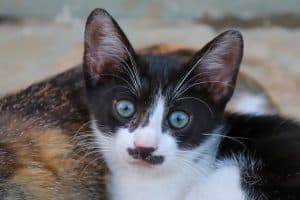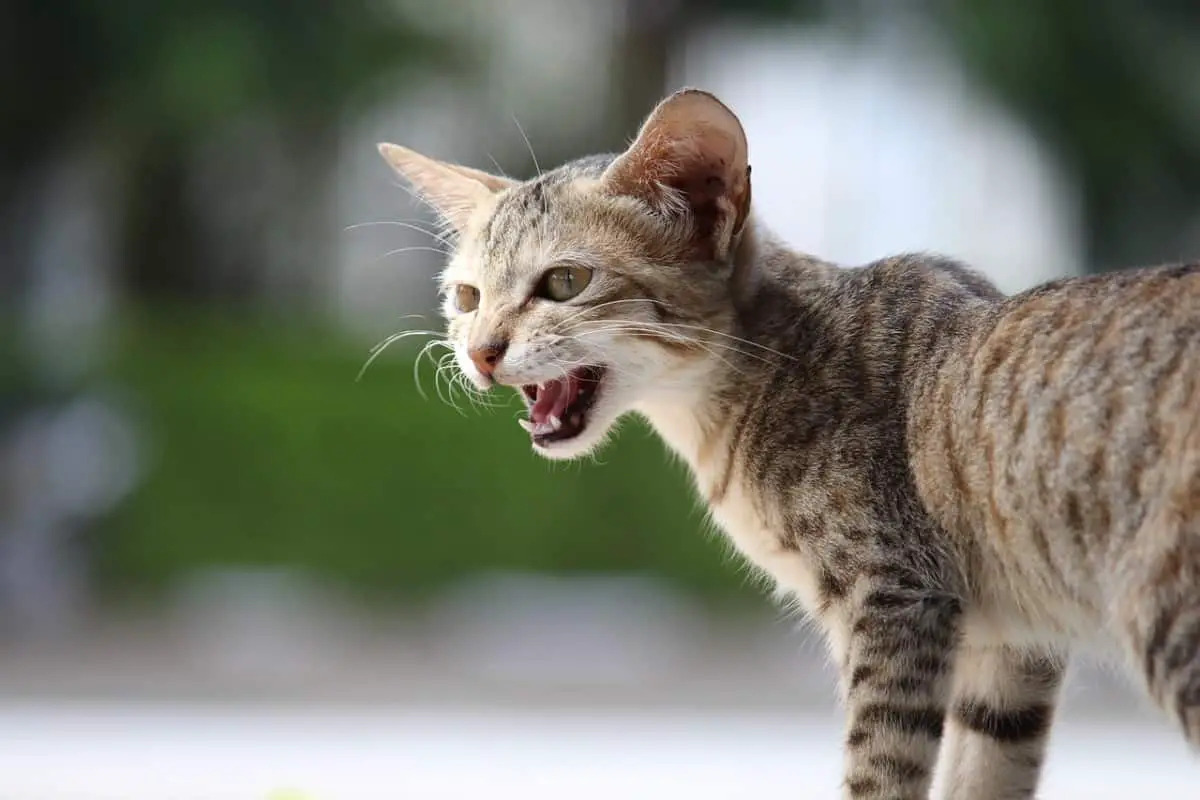Your cat speaks a different language to you, but that doesn’t mean that you can’t communicate with each other. There will be important clues like the tone of their voice, the look in his eyes, the motions they make with their tail, and the position of their ears.
All these things reveal their intentions and feelings. As you grow together, you will learn to read your cat’s signals, so you will understand what is on his mind.
[su_box title=”Are you in a Hurry?”]If you are in a hurry as most of us are then I am going to show you the answer to your question “How to Understand cat language” as fast as I can. If you really want to know what your cat is saying as well as improving the relationship you have with your cat and kitten then Click Here and watch a short video that is being used by thousands of cat owners just like you.[/su_box]
Vocalizing: Your cat has something to say

Your cats’ meows and chirps tell you a lot once you have learned to interpret them. They’ll let you know when they want food when they want affection when it is time to get up, and if they are in pain.
Unfortunately “Meow” is an all-purpose word where your cat could be saying “hello”, asking for something, stating that they have an objection or making an announcement like “I have found a mouse”. Some owners watch their cats moving around the house meowing to themselves.
Trills and chirps are how a mom cat tells her kittens to follow her. But if aimed at you, it will probably mean that your cat needs you to follow them somewhere, and normally this is to their food bowl. If you have many cats, you will regularly hear them communicate with each other in this way.
Usually, purring is a sign that the cat is content. Cats purr when they are happy. This can even be when they are eating. However, there may be times when a cat purrs, and it means that they are sick or anxious. In these instances, they are using a purr to comfort themselves, a little like when a child sucks their thumb.
A cat who is angry, annoyed, or in fear will hiss, growl, or spit. Leave the cat alone when it is like this.
. Locate your cat if they make this noise. Be aware though that in unspayed and unneutered cats, such sounds are just a part of their mating behavior. If your cat is old, they could be suffering from dementia (or other cognitive disorder), and so they will howl because they are confused and disoriented.
Twittering, chittering, or chattering are noises your cat will make when they are sat on your window ledge watching squirrels and birds.
Body language: Cats Speaking Using Their Body
Your cat probably arches their back to meet your palm when you pet him. This signals that they are enjoying the contact you are making with them. If they shrink away at the slightest touch from you, leave them alone. Right now, they are not interested in being patted.
Pay close attention to your cat’s ears, eyes, tail, and body. These all provide you with signs. These are some common clues:
Eyes
- Pupils constricted: offensive or aggressive, but possibly content
- Pupils a little large and dilated: submissive or nervous
- Pupils fully large and dilated: defensive or aggressive, but could also mean playful
Ears
- Backward, sideways, or flat: frightened, irritable, or angry
- Swiveling: listening to every little sound and attentive
- Forward: happy, interested or alert
Tail
- Tucked between legs or held very low: anxious or insecure
- Erect, fur flat: inquisitive, happy, or alert
- Straight up, quivering: really happy and excited. If your cat hasn’t been spayed or neutered, they may be about to spray.
- Thrashing around: agitated, but note that the quicker they thrash their tail about, the angrier the cat will be
- Fur standing high on end: frightened or angry
Body
- Back arched, fur flat: welcome to your touch
- Back arched, fur standing high up on end: angry or frightened
- Lying on their back, growling: ready to strike or upset
- Lying on their back, purring: very chilled and relaxed
Rubbing
If your cat rubs their body against you, they are basically making you their territory. You will also see them rub the door, a chair, and even their toys. They are announcing that this is their stuff to everyone.
Kneading
This looks a little like your cat is making biscuits and therefore is sometimes called such. The cat will work their paws on a soft surface, looking like they are kneading bread dough.
This carries over from being a kitten, as when a nursing kitten they massaged their mom’s teats to make the milk flow. Your cat will do this when they are happy.

The Flehmen response
Your cat has an extra olfactory organ that not many other creatures have, called the Jacobson’s organ. Their sense of smell is essential to, and this is why they have this. It can be found on the roof of their mouth, behind their front teeth, connected to their nasal cavity.
Should your cat gets a whiff of something fascinating, they will open their mouth and inhale. This is so that the molecules from the smell flow over their Jacobson’s organ. This will intensify the odor. It will also provide more information about the object being sniffed.
Your Cat’s Moods
Here are some tips to help you work out what sort of mood your cat is in.
Defensive: ears flattened, crouching, whiskers back, wrapped around their body or tail between their legs, and pupils dilated. They might growl, meow loudly, spit and hiss.
Aggressive: pupils very constricted, the tail may be up or down with the fur standing on end, ears back. An angry cat will stare down another cat.
They will yowl or growl until the other cat caves. Cats aren’t really looking for a fight. But they will engage in standoffs. However, this can lead to fighting if a cat won’t back down.
Startled or Frightened: ears flat against their head, back arched, whiskers back, tail erect or low, fur standing on end. They may growl, yowl, spit and hiss.
Over-stimulated or Irritated: ears turned back, pupils dilated, tail waving or twitching. Your cat may put their teeth on you or growl as a warning to stop. Intense play might be overstimulating to some cats, resulting in scratching and biting.
Anxious or Nervous: pupils dilated and tail low, ears sideways or back, or even tucked between legs. A cat may move through your home, staying close to the floor, trying to find somewhere to hide. They might also turn their face to the wall so that they can shut out the world.
Playful: tail up, ears forward, pupils somewhat dilated, whiskers forward. Playing is like hunting behavior. Your cat likes to stalk their prey (be that you or a toy). They will crouch down, rear end raised. They will do a little wiggle of their bottom and then pounce. They will bite their prey, grab it, and wrestle it to the ground. The final kick with their hind legs will kill the toy – the prey is dead.
Content: sitting, lying down, pupils narrowed, purring, eyes half-closed, tail mostly still, and ears forward. At stated before a happy cat may knead a soft surface.
[su_box title=”Affiliate Disclosure”]This website is supported by its readers. Please assume that all links are affiliate links. If you make a purchase from one of the links we will make a commission from Amazon. Thank you.[/su_box]




